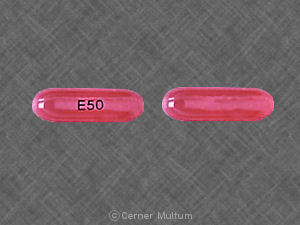Etoposide Disease Interactions
There are 3 disease interactions with etoposide.
Antineoplastics (applies to etoposide) infections
Major Potential Hazard, High plausibility. Applicable conditions: Infection - Bacterial/Fungal/Protozoal/Viral
Because of their cytotoxic effects on rapidly proliferating tissues, antineoplastic agents frequently can, to varying extent, induce myelosuppression. The use of these drugs may be contraindicated in patients with known infectious diseases. All patients should be instructed to immediately report any signs or symptoms suggesting infection such as fever, sore throat, or local infection during antineoplastic therapy. Close clinical monitoring of hematopoietic function is recommended.
References
- (2002) "Product Information. Methotrexate (methotrexate)." Lederle Laboratories
- (2001) "Product Information. Platinol (cisplatin)." Bristol-Myers Squibb
- (2001) "Product Information. Vepesid (etoposide)." Bristol-Myers Squibb
- (2001) "Product Information. Novantrone (mitoxantrone)." Immunex Corporation
- (2001) "Product Information. Mutamycin (mitomycin)." Bristol-Myers Squibb
- (2001) "Product Information. Ifex (ifosfamide)." Bristol-Myers Squibb
- (2001) "Product Information. Thiotepa (thiotepa)." Hikma USA (formerly West-Ward Pharmaceutical Corporation)
- (2001) "Product Information. Fludara (fludarabine)." Berlex Laboratories
- (2001) "Product Information. Idamycin (idarubicin)." Pharmacia and Upjohn
- (2001) "Product Information. Matulane (procarbazine)." Roche Laboratories
- (2001) "Product Information. DTIC-Dome (dacarbazine)." Bayer
- (2001) "Product Information. Adriamycin PFS (doxorubicin)." Pharmacia and Upjohn
- (2001) "Product Information. Leustatin (cladribine)." Ortho Biotech Inc
- (2001) "Product Information. Gemzar (gemcitabine)." Lilly, Eli and Company
- (2001) "Product Information. Hycamtin (topotecan)." SmithKline Beecham
- (2001) "Product Information. Taxotere (docetaxel)." Rhone Poulenc Rorer
- (2001) "Product Information. Taxol (paclitaxel)." Bristol-Myers Squibb
- (2001) "Product Information. Nipent (pentostatin)." Hospira Inc
- (2001) "Product Information. Tabloid (thioguanine)." Prasco Laboratories
- (2001) "Product Information. Xeloda (capecitabine)." Roche Laboratories
- (2022) "Product Information. Alkeran (melphalan)." Glaxo Wellcome
- (2001) "Product Information. Purinethol (mercaptopurine)." Glaxo Wellcome
- "Product Information. Leukeran Tablets (chlorambucil)." Glaxo Welcome, Research Triangle Pk, NC.
- (2001) "Product Information. Doxil (doxorubicin liposomal)." Sequus Pharmaceuticals Inc
- (2001) "Product Information. Cytosar-U (cytarabine)." Pharmacia and Upjohn
- (2001) "Product Information. Uracil Mustard (uracil mustard)." Roberts Pharmaceutical Corporation
- (2010) "Product Information. Jevtana (cabazitaxel)." sanofi-aventis
- (2010) "Product Information. Halaven (eribulin)." Eisai Inc
- (2021) "Product Information. Pepaxto (melphalan flufenamide)." Oncopeptides Inc.
Etoposide (applies to etoposide) myelosuppression
Major Potential Hazard, High plausibility. Applicable conditions: Bone Marrow Depression/Low Blood Counts, Fever, Bleeding
Etoposide induces dose-related myelosuppression. Leukopenia, thrombocytopenia, and anemia have been reported during etoposide therapy. Patients should be instructed to immediately report any signs or symptoms suggesting bone marrow suppression such as fever, sore throat, local infection, or bleeding. Therapy should be administered cautiously in patients whose bone marrow reserve may be severely depressed and should be withheld if an absolute neutrophil counts fall below 500/mm3 and/or platelet counts fall below 50,000/mm3. Clinical monitoring of hematopoetic function is recommended. Periodic complete blood counts should be done during the course of etoposide treatment and it should be performed prior to each cycle of therapy and at appropriate intervals during and after therapy. At least one determination should be done prior to each dose.
References
- Niederle N Ostermann J Achterrath W Lenaz L Schmidt CG (1991) "Etoposide in patients with previously untreated non-small-cell lung cancer: a phase I study." Cancer Chemother Pharmacol, 28, p. 59-62
- Lokich J Corkery J (1981) "Phase I study of VP-16-213 (Etoposide) administered as a continuous 5- day infusion." Cancer Treat Rep, 65, p. 887-9
- DeVore R, Higa G, Robbins A, Sarkar M (1993) "Protracted infusion of low-dose etoposide (E): preliminary results of a Phase I/II pharmacokinetic (PK) study (Meeting abstract)." Proc Annu Meet Am Soc Clin Oncol, 12, a4491993
- Kobayashi K, Ratain MJ (1994) "Pharmacodynamics and long-term toxicity of etoposide." Cancer Chemother Pharmacol, 34 Suppl, s64-8
- (2001) "Product Information. Vepesid (etoposide)." Bristol-Myers Squibb
Etoposide (applies to etoposide) renal dysfunction
Moderate Potential Hazard, Moderate plausibility.
Etoposide is primarily eliminated by the kidney. Less than 50% is eliminated as unchanged drug in the urine. Reduced clearance, increased AUC, and decreased volume of distribution have been noted in patients with impaired renal function. Therapy should be administered cautiously and dosages reduced in patients with compromised renal function. Patients with a creatinine clearance between 15 to 50 mL/min should receive 75% of the recommended dosage of etoposide. Data are not available in patients with creatinine clearances <15 mL/min and further dosage reductions are recommended. Clinical monitoring of renal function is recommended.
References
- (2001) "Product Information. Vepesid (etoposide)." Bristol-Myers Squibb
Etoposide drug interactions
There are 437 drug interactions with etoposide.
More about etoposide
- etoposide consumer information
- Check interactions
- Compare alternatives
- Pricing & coupons
- Drug images
- Side effects
- Dosage information
- During pregnancy
- Drug class: mitotic inhibitors
- Breastfeeding
Related treatment guides
Drug Interaction Classification
| Highly clinically significant. Avoid combinations; the risk of the interaction outweighs the benefit. | |
| Moderately clinically significant. Usually avoid combinations; use it only under special circumstances. | |
| Minimally clinically significant. Minimize risk; assess risk and consider an alternative drug, take steps to circumvent the interaction risk and/or institute a monitoring plan. | |
| No interaction information available. |
Further information
Always consult your healthcare provider to ensure the information displayed on this page applies to your personal circumstances.


